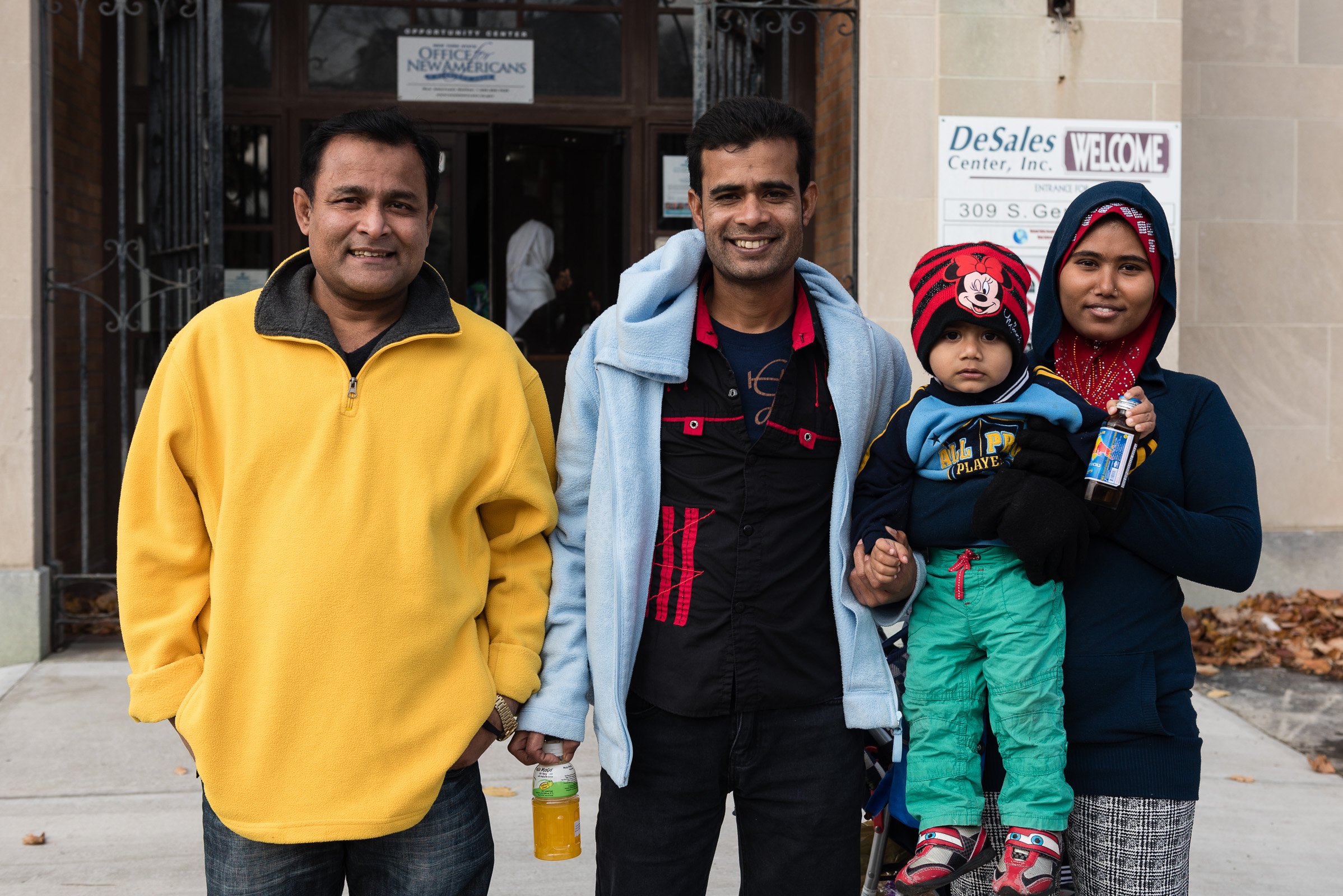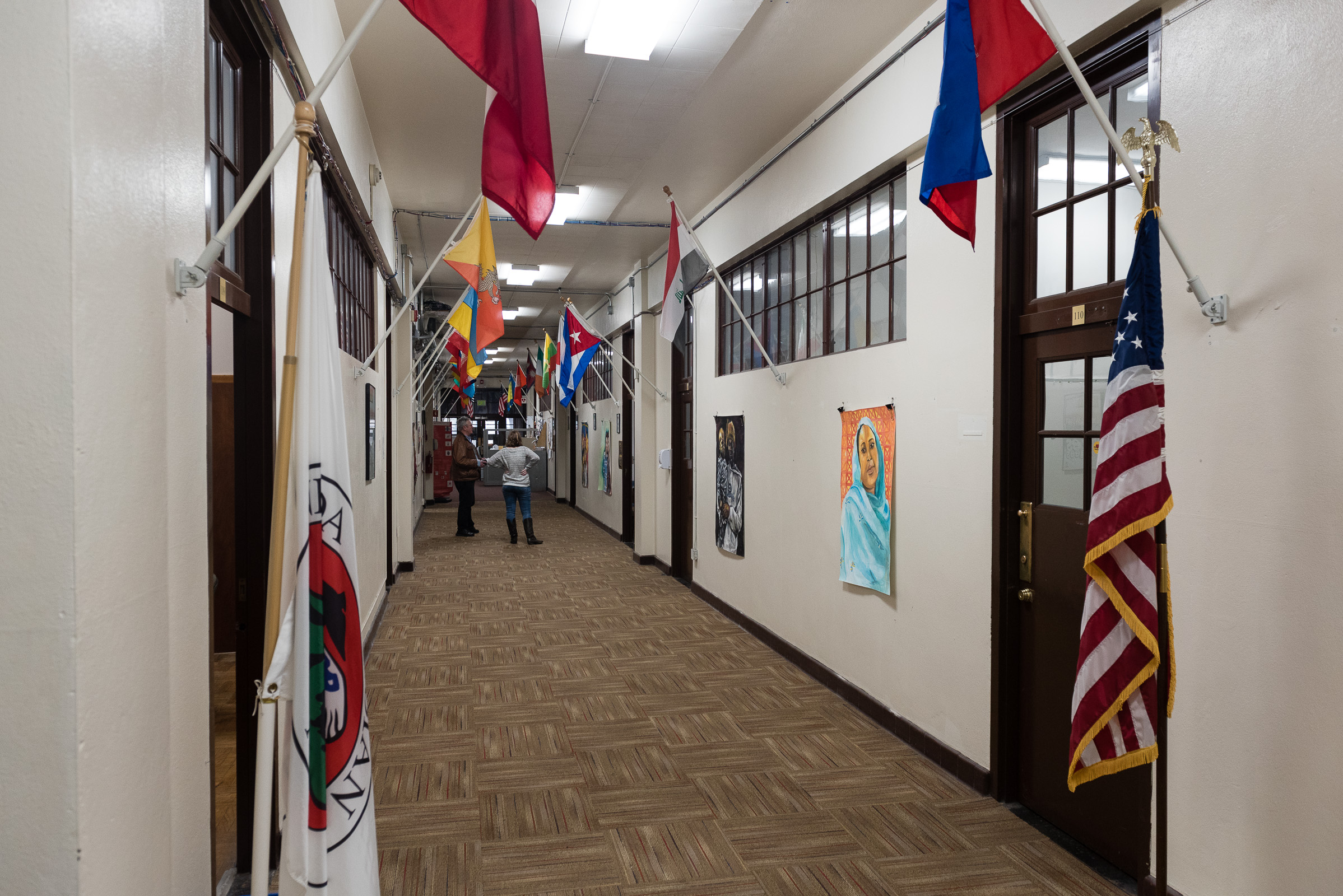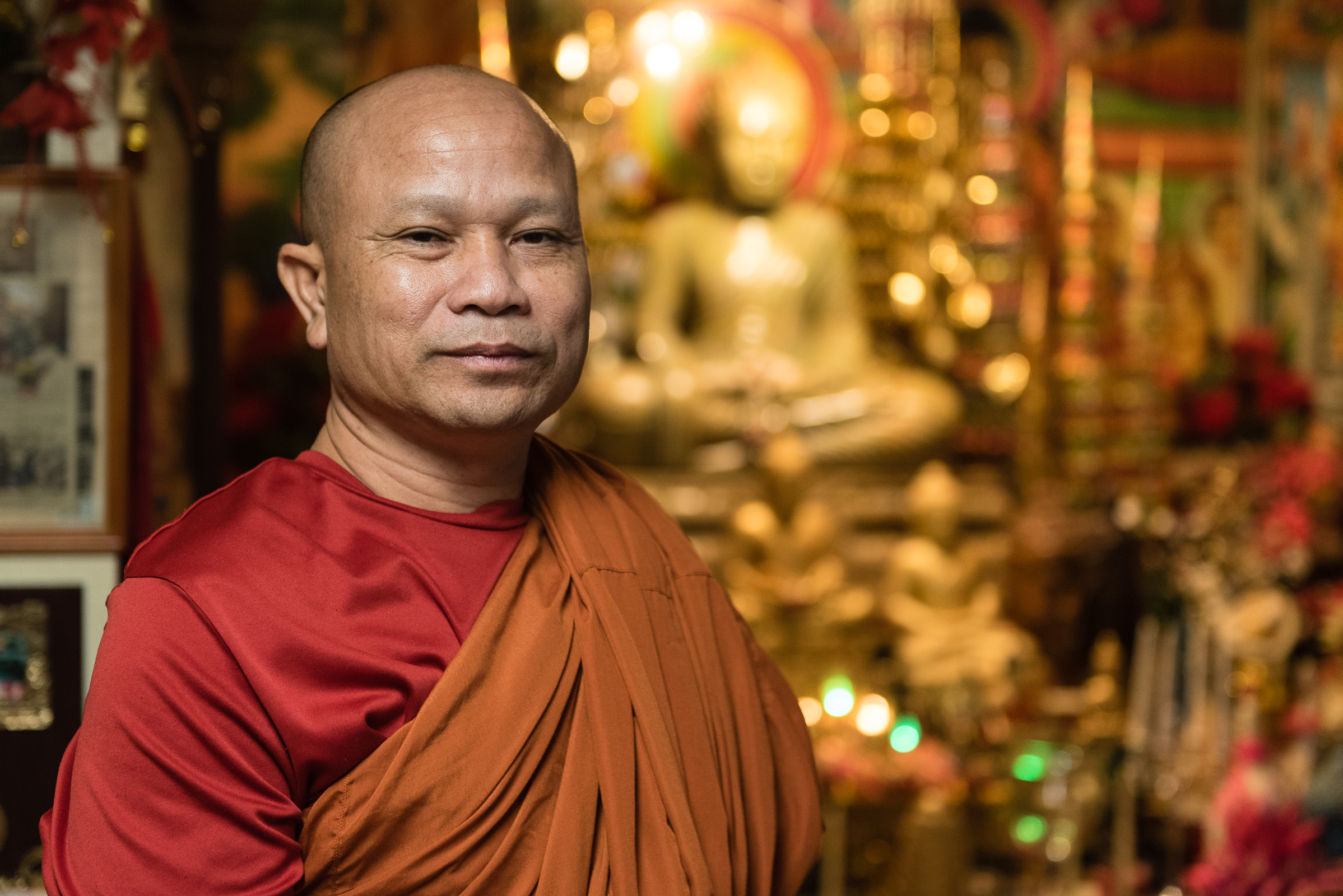Refugee Resettlement in the United States
By Joseph Ryder
“I’m happy here,” Yusuf Aweis begins, “I know I’ll be able to eat.”
Aweis is sitting on the top step of a small wooden staircase leading to the manager’s office inside a corner halal store in Utica’s Corn Hill neighborhood. Like nearly a quarter of Utica’s residents Aweis is a refugee.
Aweis is originally from Somalia and when he was seven his family escaped hunger and violence in Somalia for refugee camps in Kenya.
“I remember that we couldn’t find food and had to leave,” Aweis recalls of his time in Somalia, “But here in America I have a future now.”
The story of Utica is one defined by its open acceptance of refugees. Vital to the success of Utica’s resettlement of refugees is the Mohawk Valley Resource Center for Refugees which has helped settle over 35,000 refugees from over 30 different countries.
Some of the largest and most recent populations the center has settled includes Vietnamese, Russian, Bosnian, Somali Bantu, Burmese and Nepali.
“Refugee resettlement into the city of Utica has revitalized the city. It has stemmed severe population decline,” Shelly Callahan, executive director of the Mohawk Valley Resource Center for Refugees, said. “You can drive down Bleaker street, you can go to East Utica, you can go to Corn Hill. You can see the renovations that have happened since refugees moved in and made Utica their home.”
On a statewide level the number of refugees that New York accepts has risen from 2,500 in 2005 to 4,000 in 2014, an increase of over 50 percent based on statistics released this year by New York State Comptroller Thomas DiNapoli. Utica stands only second to New York City in the number of refugees it accepts.
In Utica, and across the United States, refugees get access to stable jobs, housing and schooling for their children, luxuries many aren’t accustomed to where they’re coming from. Most refugees have only known hunger, violence and persecution.
“I like it here because there’s no help back there,” Aweis recounts. “The government just think about itself, in Kenya and Somalia. In America [the] government helps me. And I don’t just talk about me. [The] government help all immigrants and citizens.”
When he came to Utica, Aweis founded employment at the Chobani Yogurt Company. Aweis was one of about 300 refugees Chobani employs at any given time. The company’s founder, Hamdi Ulukaya, a Turkish immigrant, makes it a point to employ refugees as part of his workforce and actively advocates on their behalf and has donated $2 million to assist humanitarian aid for Syrian refugees
Mr. Ulukaya’a advocacy drew fire on Facebook and Twitter during the 2016 presidential election from supporters of president-elect Donald Trump, who opposes resettling refugees in the United States.
Melanie Nezer, the vice president of Policy and Advocacy for Refugee Council USA, disagrees with the immigration policies of Donald Trump. “Refugees want to go to work and have their children go to school, just like anybody else.”
While the Syrian refugee crisis continues to capture headlines across the country, the largest refugee population to arrive in the United States last year were the Rohingya people from Myanmar.
Last year, 18,386 refugees arrived from Myanmar, 3,500 of whom settled in Utica, while only 1,682 came from Syria. In fiscal year 2016 President Obama raised the number of Syrians he wanted resettled to 10,000.
U.S. Refugee Admission for Fiscal Year 2015
Outside of the MVRCR office at the intersection of Park Avenue and Eagle Street in Utica Nor Kalimullah is heading home after wrapping up his English as a second language class for the day.
Kalimullah is a Rohingya Muslim from Myanmar. He recounts the violence the Myanmar government committed against him and his people. The government in Myanmar is actively persecuting Muslims and have driven thousands from their homes into refugee camps in neighboring counties, who themselves are not enthusiastic about housing the refugee population.
“The [Myanmar government] kills children and old women,” Kalimullah said. “They rape a lot of women, Rohingya people.”
The Rohingya Muslim community is on the verge of "mass annihilation," according to a 2015 study by the International State Crime Initiative (ISCI) at the Queen Mary University of London. The historically migratory Muslim community has been targeted often at the behest of powerful extremist groups from the country’s majority Buddhist population and even government authorities according to the report.
In the United States refugees from Myanmar have come after decades in refugee camps in countries that didn’t want them.
“I’m very happy about my future in United States,” Kalimullah said. The camp he escaped to wasn’t much better than the Myanmar government he continues, his family didn’t have a future there.
“In America, I have a future,” Kalimullah said, next to him, his friend Abdul Alim nods in agreement while standing with his wife.
“I’m [from] Bangladesh. We come here as refugee together,” Alim said while picking up his young son whom is named after his father.
“Refugees are people fleeing violence, they’re not looking to perpetrate it,” Breen said, “When a refugee steps on a plane to come to the United States they are the most vetted person on that plane.”
Before someone can even face the U.S. vetting process they must first be deemed eligible. The United Nations High Commission for Refugees, the UNHCR or occasionally a U.S. embassy or Nongovernmental Organization must determine if an individual is deemed eligible of refugee status, and of those who needs resettlement.
““We have a chance in America, that’s why it’s a great country””
Based on United Nations figures this process can take anywhere from four to 10 months.
According to Naomi Steinberg, Director of Refugee Council USA, a resettlement agency for refugees, about 10 percent of refugees need permanent resettlement. Most refugees only need temporary assistance until conditions in their home country improve enough for them to return.
“Although 10 percent of the refugee population needs resettlement, there’s only slots for about a fifth of them,” Steinberg said. The people who need resettlement will never be able to go home due to violence and discrimination.
“From here the U.N. determines which country the individual case will be handed to, the refugee doesn’t have control over which country they’re referred to,” Breen said.
Once a refugee’s case is referred to the United States a vetting process commences and involves multiple federal intelligence and security agencies. Per a senior State Department official in a policy memo to the presabout 50 percent of the cases are rejected.
“If I want to come to America the process is two years. We have four interviews to get into [the] United States,” Kalimullah said. His friend Abdul Alim states it took him a similar amount of time to get to the United States.
Although two years is the average timeframe, for some refugees, the process may take much longer.
Yusuf Aweis began the process to emigrate to the United States as a refugee in 2004 while living in a refugee camp in Kenya with his family. It wasn’t until 2010 that Aweis got informed that he would get to come to the United States. Although thankful to be in the United States, Aweis is still working to support his brother in Kenya who’s still waiting to come to the U.S.
“My brother still there. He started process at same time,” Aweis said.
Utica is a City of Migration. The foreign born residents of Utica constitute 17.6% of the city’s total population (2012 U.S. Census). The percentage of foreign born residents in Utica is higher than any other city on the thruway corridor. A language other than English is spoken in 26.6% of households in Utica according to the 2012 census.
According to Steinberg the United States needs to double down on its commitment to accepting refugees. “We want to see the president set a goal of bringing 200,00 refugees to the U.S. in fiscal year 2017. We can do a lot with a little, but if the goal is raised we hope that congress will increase funding for refugee resettlement services.”
There’s an economic incentive to resettling refugees according to Randal Johnson, senior vice president of the U.S. Chamber of Commerce.
“Refugees want to work and employers see these people who are eager for work,” Johnson said, “We can look at Utica, New York. Refugees have stemmed to decline of the local economy and are helping turn the city around.”
“We have a chance in America, that’s why it’s a great country,” Kalimullah said.
Refugees are optimistic about their futures in America, happy with the chance to live in peace, for some refugees, the first time they’ve ever been able live like that.
“In America there are many religion, like beautiful flower. So many religions living together,” Kalimullah said.
“I very very good now. My son did not go to school. We did not have money so my son did not go to school which is big problem. America come and help and my son is already going to school and I’m very happy,” Alim said
He takes his wife Jaura’s hand as the family prepares to walk home from the Refugee Center where upstairs they attended an ESL class.
“I very happy for my children future in America,” he said as he begins to walk away, “My son can eat, go to school and have future.”
Immigrants and Refugees Fearful of Trump's America
By Joseph Ryder
January 20, 2017 is a date that’s looming large over refugees, immigrants and their advocates. The inauguration of Donald Trump as the 45th president of the United States is causing fear and doubt about the future of America’s immigration policy and resettled refugees.
“The people I’m dealing with are downright scared,” says Patrick Young, an immigration attorney and immigrant rights advocate working with the Central American Refugee Center.
“People are calling me and coming to the office, they afraid of their future under a Trump administration,” Young continues.
Donald Trump exiting the Emporium in Patchogue on April 14, 2016 after a fundraiser hosted by the Suffolk County GOP. Joseph Ryder / WSHU Public Radio
Last year the United States accepted 70,000 refugees from over 30 different nations for varying reasons including genocide, discrimination and civil war. For the upcoming fiscal year President Obama has increased the quota of refugees the country will resettle, raising the figure to 85,000 people, but advocates for refugees are unsure if President Trump and a Republican controlled congress will follow through on President Obama’s quota.
“The immigration laws of the United States give the president the power to suspend entry into the country of any class of persons that the president deems detrimental to the interests or security of the United States, as he deems appropriate,” Donald Trump said during a June 13 speech, “I will use this power to protect the American people. When I am elected, I will suspend immigration from areas of the world when there is a proven history of terrorism against the United States, Europe or our allies, until we understand how to end these threats.”
Trump’s ban on individuals from certain areas is a retooling of his previous campaign promise to ban all Muslims from entering the United States after it was met with bipartisan resistance.
Michael Breen, the director of the Truman Center for National Policy believes that Trump’s proposal to ban refugees will be at odds with his plans to defeat ISIS.
“ISIS prays on misery and they want to offer people a simple choice: join or die. The United States can open a third option of hope for these people,” Breen says, “If we break our promise to those who stood with us, no one will stand with us again.”
The United States is the world’s leading resettlement country for refugees and has been a consistent mainstay of U.S. foreign policy for decades and could potentially unravel during the Trump administration.
The president has all the authority when it comes to resettling refugees.
Advocates don’t believe this is a time the global community can afford the U.S. to step back from its role in resettling refugees.
“We’re seeing the worst refugee problem since World War Two,” Melanie Nezer says, “The U.S. needs to bring more refugees here”
With all the uncertainty over the future of America’s immigration and refugee policy “People begin to think ‘Is America going to be for the world in the future what it’s stood for in the past.’,” Breen says.
“Trump’s going to be the next president,” Young says, “All we can do is wait and see what happens now.”



